|
Dean & Son Publishers - A Short History:
As published by vintagepopupbooks.com in the May 2013 edition of the Movable Book Society Newsletter, "Movable Stationary"
(Edited Feb 19,2025 as more information has been discovered)
"Copyright © Vintagepopupbooks.com. All rights reserved.
This content may be cited with proper attribution to Vintagepopupbooks.com and a link back to the source."
Author's Note: This composition serves as an informational piece rather than a scholarly research document. Despite this, considerable effort has been dedicated to ensuring the content's accuracy and engagement. The material draws upon a wide spectrum of resources, with explicit citations included for direct quotations only. Should you require specific source details for any content, please reach out to us at [email protected]
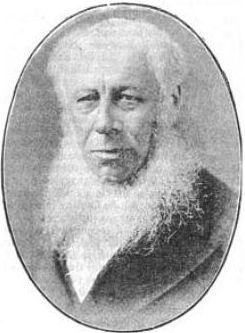
George Alfred Henry Dean (July 1, 1822 – May 13, 1891)
Dean & Son claimed to be the “originator of movable books for children.” While this may be arguable, they were certainly the first to produce movable books in large quantities.
Most of the wonderful nineteenth-century Dean & Son movable books that are such a delight to collect were produced under the watch of George Alfred Henry Dean (pictured above). I have documented the history of Dean & Son chronologically, starting with George Dean’s maternal Great Great Grandfather, Thomas Bailey …..
Thomas Bailey 1 was recorded in the Stationers’ Company registers as a “Yeoman of the parish of St John, Wapping.” Old references that we’ve found refer to the company of Dean & Son as having been family owned since 1702. The family’s jump into the printing/publishing business likely started with Thomas Bailey 1 who died in 1746. His son, also named Thomas, became a freeman of the Stationers' Company in 1741, marking his official entry into the London printing trade. He set up his printing company at “Billiter Lane, Leadenhall Street” in 1741. He traded under the sign of the “Ship and Crown.” Most of the publications Thomas Bailey II put out were reprints and romantic chapbooks, some considered to be a bit salacious. He often printed his offerings with these words: "Sold by THOMAS BAILEY, Copper-Plate and Letter-Press PRINTER, Opposite the Pewter-Platter, in Leaden-Hall Street; where Gentlemen, Shopkeepers, and Others may have their Bills neatly Printed." One title we found of Bailey’s from the 1750s was “Love and Innocence Betrayed, a Secret History, life, and Surprising Adventures, of Miss D .” At this point, the Bailey publishing business was decidedly “low rung” and probably not highly profitable. Distribution was carried out primarily by “street hawkers” – a far cry from the international publishing dynasty that this family would eventually create.The Bailey family represents an example of how early publishers navigated the evolving landscape of print during the 18th century, focusing on producing low-cost, widely accessible literature that appealed to the masses. It’s likely that they made more money from their other services which included not only printing for others, but selling medicines to cure such ails as leprosy, scurvy, and hemorrhoids. At one point they even called themselves “Bailey’s Printing Office and Medicinal Warehouse.” Thomas Bailey II and his wife Elizabeth “Betty”, had 2 sons (William & Thomas) and 2 daughters (Elizabeth & Jane). The oldest son was William (1743-1794) .
Thomas Bailey II died in 1764 and left everything, including his company, to his wife Betty. Betty took over the company and we can find her imprint “Mrs. Bailey’s Printing Office, the Ship and Crown” on several books of that era. The firm continued producing affordable literature, capitalizing on its existing market reach. The publications often lacked specific dates and used generic imprints, making it difficult to pinpoint their exact release periods. The family business was located at 110 Leadenhall Street. There was dissension within the Bailey family. Thomas Bailey’s will makes mention of son Thomas and daughter Jane, but nothing of William or the other sister. It appears that they were “disinherited.” William started his own printing company around 1767. Brother Thomas separately carried on the original family business with much less success than big brother William. Thomas Bailey III sold the family business to William (George Dean’s Grandfather) before his death in 1791. William Bailey’s sign for his printing company read A a B, interpreted by the curious as “BIG A, LITTLE a, BOUNCING B”. Baileys printing offices were located at 41, Leadenhall Street from 1770-1785 and then at 42 Bishopsgate Street from 1785 -1790. Many of his publications in the 1700s were without his name, and have imprints "printed and sold at the a," or, "at the little a, 41 Leadenhall Street." They were listed as doing letter-press, copper-plate, and music-printing. At the time it was trendy to list your services using rhyming verse. The British Library gives us this advertising verse from William’s shop, ‘Your Shop-Bills also at any time, You may have put into jingling Rhime’. Bailey also published a children’s ABC book which some sources call the first Toy Book ever published in England
William Bailey married Susanna “Susan” Nee Hawes (1742-1810) in 1767. William and Susan had two sons, John and Thomas, and two daughters, Mary Ann, and Anna Maria Bailey. In 1790 they moved to 50 Bishopsgate. After her husband’s death in 1794, Susan successfully took over running the company - under her own imprint. We find mostly romantic chapbooks with her imprint such as "The Captivated Philosopher", "The Power of Love over Reason," and "The Miller's Beautiful Daughter"
Susan’s son John Bailey went on to start his own company on Chancery Lane in 1799. Susan relocated to 35 Threadneedle Street in 1808. After her death in 1810, Susan Bailey willed the company solely to her two daughters. For whatever reason, Susan left her sons only a pittance. In her will “The whole of my business and…everything thereunto belonging” was left to her daughters. Dean & Munday:By that time, both girls had married apprentices from their parent’s shop, Mr. Thomas Dean (Sr.) and Mr. William Munday (1780-1849). Nevertheless, Susan’s will stipulated adamantly, that the business that "my two daughters will share equally any profits arising from the printing business…for their own solo use and benefit absolutely independent of any present or future husbands…” Indeed, records show that the company Dean & Munday had both sisters, Mary Ann Dean (1785-1860) and Anna Maria Munday (1782-1864) listed as its principals between 1812 and 1840. Although the terms of the will were not entirely upheld, Mary Ann Dean and Anna Maria Munday were at least nominally recognized as the principals of the business, which operated under the name “Dean & Munday” until their husbands formally dissolved the partnership on December 25, 1840, although the “Dean & Munday” imprint survived to 1842. It is likely that the dissolution of the Dean & Munday partnership in December 1840 was related to Thomas Munday's involvement in the copyright case reported at length in the Morning Post 6 July 1837. Legal battles over copyright in the 19th century were often complex and could be quite costly. If the case had implications for the firm's publishing practices or exposed it to liabilities, it may have been a significant factor in deciding to dissolve the partnership.However, Perhaps it was because of all the babies the sisters bore, or the customs of the early nineteenth century, that regardless of Mother Susan’s attempts to ensure the female succession of the business, it would become identified primarily with the husbands.
The apprentice husbands, along with their wives, took over the company naming it Dean & Munday in 1811.
Mother Susan had already located at 35 Threadneedle Street in 1808. Mary Ann and her husband Thomas Dean (1783-1856) had several children, the oldest boy named Thomas W. Dean (Jr.) (1796 - 1856). Anna Marie and her husband, William Munday also had several children, the oldest son was Thomas H. Munday, (1812 - 1849). Closely bound by business and family, the Deans and Mundays raised, with the help of nannies, their large brood of children right behind their shop on Threadneedle Street. Once they entered their teens, Thomas Dean and Thomas Munday - cousins and oldest sons of Mary Ann and Anna Marie - became apprentices and then partners in Dean & Munday. The firm Dean & Munday published the company’s first novelty books, The Dame Wonder Transformation Book series. These were small (7.2" X 4.4" soft cover books with a hole on each page. The face on the last page is therefore shown through each hole. A fine example can be seen here: https://specialcollections.blogs.brynmawr.edu/2020/03/31/transformations-of-images-and-texts-the-orphan-girl/
(Interesting Note: American publisher Edward Dunigan appears to have copied this Dean & Munday series but used new illustrations 'strongly inspired by' the illustrations in the Dean books. They also adapted the text as necessary to make them work for American readers. It is believed that later, the earliest versions on two sides of the paper and without holes were done by Dunigan, with the change in series title from 'DW's Transformations' to 'DW's Picture Books', and when McLoughlin took over Dunigan, it was these non-novelty books that they continued to issue under the Mcloughlin imprint. We don't believe that Mcloughlin ever issued them with holes.)
 from the collection of vintagepopupbooks.com Vintage Pop Up Books Rare & Antiquarian Movables from the collection of vintagepopupbooks.com Vintage Pop Up Books Rare & Antiquarian Movables
A passage from The Publishers' Circular and Booksellers' Record (May 13, 1922 page 479) confirms that Dean & Munday were heavily involved in printing for the East India Company. It states that: The firm printed all of the materials for the East India Company, which was one of the most potent commercial enterprises of its time. If Dean & Munday printed materials for the East India Company (EIC), it underscores their status as a highly trusted and established printing firm in 19th-century Britain. The EIC, one of the most powerful commercial enterprises in history, controlled half of the world’s trade, dealing in tea, silk, cotton, spices, and opium. With a private army larger than the British Army, it governed vast regions of India and shaped British colonial policy, global commerce, and economic expansion.Their connection to the EIC suggests Dean & Munday were involved in high-security printing for one of the era’s most influential financial and political entities. This positions them not just as children’s book publishers, but as trusted printers for commercial and governmental purposes.
Thomas Dean & Co:
Thomas Dean Jr. was the father of George Alfred Henry Dean, born in 1822 as the third of 5 children and the oldest son. George Dean entered his Father’s publishing business, Dean & Munday, in 1839 at the age of 18. Thomas Dean Jr. went on to become very successful but had the reputation of being a dangerous man with “the devil” in him – perhaps that’s why by 1843 -things didn’t work out with his cousin Thomas Munday.
Thomas Dean Jr. officially took over the firm Dean & Munday in 1843 and re-named it Thomas Dean & Co. Then in 1847 he again re-named it, this time to Thomas Dean & Son (while his publisher's imprints stated Thomas Dean & Son, the cover of his books at the time often stated simply “Dean & Son.”
In 1845 the company left Threadneedle Street and moved westward to 11 Ludgate Hill.
 
Thomas Dean Jr. was very advanced for his time. He made many improvements to the art of lithography during its early days. At that time the lithography stones were cleaned every night and drawn on again the following morning. They started out printing on stone and later used wood engravings – all colored by hand.
Thomas Dean Jr.,, played a significant role in advancing lithographic printing in the early 19th century. While Alois Senefelder invented lithography in 1796, it was pioneers like Dean who refined and adapted the technique for commercial use. Dean & Munday were among the few firms to embrace lithography, enhancing the quality and efficiency of their printed materials. Their adoption of this method contributed to the widespread use of lithography in publishing, particularly for illustrated works.In addition to their contributions to printing technology, Dean & Munday were known for producing a variety of printed materials, including children's books and lithographic prints. Their work is well-represented in collections such as those of the Victoria and Albert Museum, which holds numerous items published by the firm.
Dean & Son:
Thomas Dean Jr. died quite suddenly at age 60 on May 13, 1856 (on the same day that his son George died 35 years later). After his Father’s death, George Alfred Henry Dean (pictured at the top of this article) changed the company name from “Thomas Dean & Son” to simply “Dean & Son.” George claimed that his company was the originator of children’s movable books. They were certainly the most prolific during the last half of the nineteenth century. Dean had a special department of skilled craftsmen to assemble just these books. Besides publishing, he also had his own coloring and printing abilities as evidenced by publishers' ads and notes on illustrations such as “Lith. & Produced Dean & Son. London.” They also advertised themselves, as early as 1865 as “Lithographers and printers to the trade as well as publishers of children’s books of worldwide reputation.”
While other publishers such as Darton and Ward & Lock put out some movable toy books, Dean was by far the most prolific. His near toy book monopoly would not be seriously challenged until Raphael Tuck came along in 1870. Dean also published the first magazine that was printed in chromolithography, “The Little One’s Own Coloured Picture Paper”, which was a collection of children's stories, poetry, and other miscellaneous writings for children. George Dean moved his company to 160A Fleet Street in 1871 because the building on Ludgate Hill had to be raised to widen the road. A prestigious address at the time, it was located in Gough Square just behind the Daily Express building. (By the 1920s however 160A Fleet Street would become a decrepit building destined for the wreaking ball.)
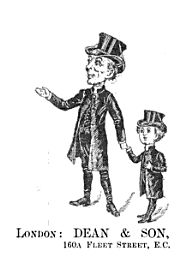
Unlike his father, George Dean had many friends both in and out of the trade and was well-loved by family, friends, and employees alike. He was often referred to as “a friend of children.” Judging from his photo he does look a bit like Santa Claus... On the occasion of his 70th birthday, Dean’s staff presented him with a pair of framed etchings by the prolific Victorian landscape artist, Benjamin Williams Leader. Not all of his employees were so wonderful, however. In 1866 records show an incident where his Foreman on the print-coloring line stole the wages that he had been entrusted with to pay the coloring people.
During George Dean’s tenure, the company made great strides, progressing from stencil and hand coloring to lithography and color blocking. They did a lot of work, such as coloring, for other London publishers. Dean & Son also supplied the trade with all types of printing supplies and equipment. They were closely tied with The India Company and kept a warehouse to sell imported foreign luxury goods. They were big in the bible business.In addition to their renowned books, Dean & Son produced an impressive array of decorative and functional items that catered to the Victorian era’s fascination with beautifully crafted goods. They were known for their elaborate perfumed fan almanacs, which not only served as calendars but were also designed to be decorative fans in various shapes, such as traditional fans, screens, and stand shapes. These items were often richly adorned with gold, vibrant colors, and intricate illustrations, making them popular gifts. Beyond almanacs, Dean & Son expanded into the production of fancy stationery, which included ornamental calendars, greeting cards, and writing sets, all reflecting the era’s penchant for luxurious presentation.
An original Dean & Son fan - as depicted in this ad - is available from Vintage Pop-Up Books at Dean fan
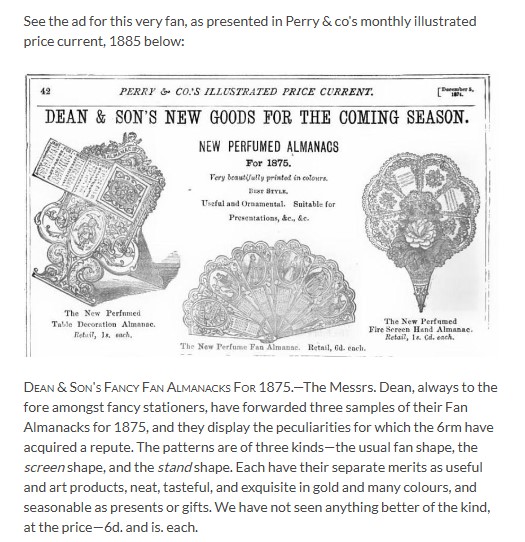 
One of the most remarkable Dean's from our collection is a tiny 5 layer peepshow Christmas card that Dean produced in 1867. While no longer available - it now happily resides at the University of Santago de Compostela where it was shown in 2014 via the exhibit entitled "A Christmas in Full Dimensions".
You can still view the card in our Virtual Museum: Tiny Dean & Son Peepshow Card
Vintagepopupbooks.com has a large collection of movable books by Dean & Son, those for sale are available here:
Antiquarian Movable Books For Sale at Vintage Pop-Up Books
History Continues.....
George Dean was afflicted with a condition called Angina Pectoris but kept his sharp mind. After several years of failing health, George Dean died at Southsea on May 13, 1891. He is buried at Ladywell & Brockley Cemetery in London next to his wife, Emily “Emma” Dean, who died in 1902. After George Dean’s passing his two sons, George and Henry, took over the company. On February 24, 1892, they became a limited liability company and changed the name to “Dean & Son, Limited.” The International Bookseller, volume 1, 1892 states: “In consequence of the recent death of the head of the Dean & Son firm, the members of his family, to whom his share of the business was left, have thought it best to form the whole into a limited company, under the style of Dean and Son limited. The late partners assume the position of directors, whilst the capital remains the same.”
The young Dean brothers did very well after George Dean’s death. They went on to secure many gold medals at various exhibitions such as The Paper, Printing, Stationery, Publishing, and Fancy Goods International Exhibition and Market as well as The Exhibition at the Royal Aquarium 1892 where they exhibited their movable toy books in various stages of production. Note: A couple of old newspaper archive editorials about these exhibitions complain that gold medals “could be had for a certain amount of hard cash.”
At the height of its popularity during a time of great prosperity in the Western world, The Deans employed hundreds of workers, including those hired for its spin-off company, Dean's Rag Book Company Ltd, founded in 1903. The rag book company was formed after Henry Dean invented a way to make books practically indestructible. He filed a patent for “books with cloth leaves” on Dec 18, 1903. The first rag book was entitled The Life of a Bold AB on his Ship in the Rolling C. This spin-off company shared the same premises as “Dean & Son” until 1911 when it moved to its own factory. They later went on to manufacture toys and is now primarily known as Britain's oldest Teddy Bear manufacturer. Dean’s Rag Book Company has its own history as well as its own legion of fans and collectors. We recommend the book The Dean's Rag Book Co. LTD - The First 100 Years by Neil Miller if you are interested in the history of this spin-off rag book, toys, and teddy bear company. Dean & Son LTD controlled Dean's Rag Book Company until 1952 when the two companies parted ways.
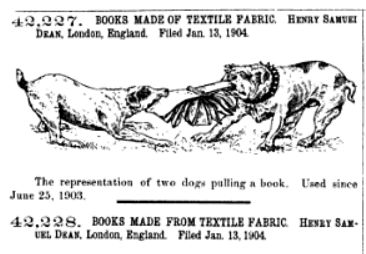
The elder brother, George G. F. P. Dean died in 1909 at the age of 55. He died quite suddenly after contracting “blood poisoning from some unwholesome fish” while on holiday in Switzerland. Henry Dean was left to run the company joined by his younger brother A. W. Dean alongside other directors including Francis G. Green, Edward Hamilton, Walter Scholes, and perhaps an E. Powers.
1921 - The Dean Family Dynasty ends ……………..
In 1921, the long-standing Dean family control of Dean & Son came to an end. Henry Samuel Dean and his younger brother, A.W. Dean, both retired from the board that year. In September 1921, Dean & Son Limited was acquired by Odhams Press for the sum of £456,316. The firm remained operational under its existing name and traditions but with new leadership and plans for expansion. J.S. Elias, managing director of Odhams Press, became chairman of Dean & Son, with W.J.B. Odhams and Col. Grant Morden also joining the board. Longtime directors F.G. Green and A.G.M. Hesilrige remained in their positions, ensuring continuity during the transition. Elias noted in a 1921 announcement that Dean & Son had been a family-run business since 1702, dating back to the reign of Queen Anne, and promised that while the company’s traditions would be upheld, significant developments were to be expected. In February 1922, Dean & Son moved from Fleet Street to new premises at 29 King Street, Covent Garden, in a building remodeled to suit their needs. The Fleet Street location retained the company's name for some time after the move. The relocation marked yet another westward shift for the firm, placing it in a historic bookselling and publishing district. The influence of Odhams Press signaled a new era for Dean & Son, with access to larger-scale production and distribution networks. In 1933, the company relocated once again, this time to No. 6, La Belle Sauvage, Ludgate Hill, London, continuing its evolution under the ownership of Odhams Press.
Modern-day Dean & Son imprint:
Below, we try to summarize Dean & Son's complicated journey through various publishing companies and buy-outs. Dean & Son Limited and the Dean & Son imprint continue to this day.
Under Odham’s and the imprint Dean & Son LTD, Dean & Son went on to produce several 1930s pop-up books with Walt Disney such as Mickey Mouse Presents his Silly Symphonies and Mickey Mouse in King Arthur's Court. (Note: the Dean versions say scenic illustrations rather than pop-up). In 1939 Dean & Son moved again, this time to 41-43, Ludgate Hill London where they would stay until the late 70’s. The 1950s brought us more Dean & Son pop-up/movables such as Mickey’s Treasure Trove, and Visit to the Zoo. Odham’s Press was sold to Fleetway/Mirror Co. in 1961. In 1963 International Publishing Corporation - "IPC” was formed, bringing together rival publishing companies including Fleetway/Odham’s and The Hamlyn Group. While each company continued to operate semi-autonomously, Dean & Son went under the Hamlyn umbrella. Dean & Son, however, remained at Ludgate. Although within the Hamlyn Group, they did not move to Hamlyn’s headquarters in Feltham because of the specialist nature of their business. IPC continued to publish books under the Dean & Son imprint such as Bobby Bear’s Pop-up Book. The Dean & Son imprint continued in the 70’s with books such as Dean's Big Top Circus Pop-Up Book. IPC had bought Hamlyn in 1963 for £ 2,250,000. The Reed Group acquired IPC in 1970 to form the giant global corporation, Reed International. The Dean imprint remained under Hamlyn Group which was now under Reed International. In 1983, under Reed, Hamlyn combined its own brand publishing division with that of Dean & Son to form Dean's International Publishing. They were called Dean’s International Publishing from 1983- 1986. Hamlyn bought his company back in 1986. In 1986 Deans International Publishing gave its address as 52-54 Southwark St. London - A Division of The Hamlyn Publishing Group Limited London • New York • Sydney • Toronto. Reed Publishing International again acquired Hamlyn’s company in 1987. Today Dean & Son is a private company listing Egmont Holding Ltd as its sole shareholder. Egmont acquired Reed Publishing's Children's Books division and along with it, the Dean & Son imprint, in 1998. Egmont is the UK's largest children's book publisher. The parent company, Egmont Group out of Denmark, is a world-leading media organization in more than 30 countries. It is owned by a charitable foundation. Dean & Son Limited’s current trading address, still owned by Egmont, is listed as 1 Nicholas Road London.
More Interesting Notes:
The early Dean’s company was best known for its movable and toy books. Dean and Son published over 200 books with movable/pop-up elements before 1900. (We will soon be posting a list of all that we have found so far (over 200) on our website - vintagepopupbooks.com.) They were the leading producer of movable books at the time. Identifying the publishing editions and dates is difficult. Knowing the dates that Dean was at various addresses is useful for determining the date “window” that books were published in. Often the address was printed but no date. Using the code on the back of each book can be a helpful way of identifying Dean’s print run and print date. This method is not foolproof however because it’s not really a code for dating the book and print run. It’s actually a code for the date and print run of the advert sheet which was used on the back cover of various books. For example, the code might indicate a print run of 15,000 - but that technically means 15,000 advert sheets, not copies of the book. The books and the advert sheets are two different things, so while the code can be very useful for estimating, it can’t be used to definitively determine print run and publication date.
Location dates:
1770 - 1785 41 Leadenhall Street
1785 – 1790 42 Bishopsgate
1790 – 1807 50 Bishopsgate
1808 – 35 Threadneedle Street1816 - 40 Threadneedle Street
1833 - 35 Threadneedle Street
Dean & Son had multiple addresses on Ludgate Hill during the 19th century to support their expanding publishing operations. They moved to 11 Ludgate Hill in 1845, and by 1854 they had expanded to include 31 Ludgate Hill. Further growth led them to acquire 65 Ludgate Hill, which they occupied from 1865 until their move to Fleet Street in 1873.
1845 - 11 Ludgate Hill1855 - 11 Ludgate Hill AND 31 Ludgate Hill
1865 - 65 Ludgate Hill
1873 - 160A Fleet Street
1921 – 1932 29 King Street Covent Garden
1933 – 1938 No. 6, La Belle Sauvage, Ludgate Hill
1939 – 1977 41-43, Ludgate Hill London
After Ludgate the registered address for Dean & Son changed often. Here are some of the most recent addresses: 1992 - 1998 81 Fulham Road London, 1998 - 2000 Wilmslow Road Handforth Cheshire, 2000- 2012 239 Kensington High Street London,
2012 – 2020 (as of this update April 2020) - 1 Nicholas Road London.
An International Dynasty……
Dean & Son’s success in the international market was rooted in a multifaceted strategy that involved both translation and cultural adaptation. Instead of simply exporting English-language books to other English-speaking markets, Dean & Son collaborated with European publishers to produce editions tailored to local languages and cultural preferences. This adaptability allowed them to reach a wide range of readers, thus expanding their brand’s global appeal.
A key aspect of Dean & Son's strategy was their participation in a network of European publishers, which enabled them to efficiently distribute books across borders. By leveraging these partnerships, they gained access to established distribution channels, eliminating the need for costly infrastructure. This network allowed Dean & Son, along with other English publishers, to enter new markets more effectively and with lower financial risk.
Crucially, Dean & Son’s success was also tied to their willingness to modify content to suit various international audiences. Popular stories were often re-illustrated and occasionally adjusted in terms of narrative elements to align with the cultural expectations of different regions. This editorial flexibility ensured that their books were not only widely appealing but also resonated with readers in diverse markets. By doing so, Dean & Son ensured that English children's literature could transcend language barriers, further solidifying their international presence.
To strengthen their brand identity abroad, Dean & Son developed distinctive trademarks and series that were easily recognizable to foreign audiences. This brand-building effort helped their books stand out in competitive international markets, making them a trusted name among parents and educators.
By focusing on local partnerships, cultural customization, and strong brand development, Dean & Son, alongside their peers, set the stage for the global distribution of children's books in the late 19th century. The collaborative efforts extended beyond mere distribution; European partners often contributed to the illustration and adaptation process, ensuring that the books were well-suited to the tastes of local readers. This combination of strategic alliances, content adaptation, and innovative branding allowed Dean & Son to remain competitive in an evolving global market, ultimately paving the way for the flourishing international children's book industry in the early 20th century.
An example of an International Partnership:
Guérin-Müller (later A. Capendu), a French publisher with a book titled "Le Polichinelle des Champs-Élysées" (c. 1880), produced in Paris, has a sales catalog with a reference to Dean & Son. This suggests that Dean & Son might have had a commercial relationship or an influence on the French publisher’s works, particularly in the production of movable books. "The Royal Punch & Judy" (1861) bu Dean & son, is similar to The "Polichinelle des Champs-Élysées" book, published by Guérin-Müller around 1880. The presence of Dean & Son's name on the lower cover of "Le Polichinelle des Champs-Élysées" likely indicates a commercial relationship or partnership between the two publishing houses. If a publisher like Guérin-Müller included Dean & Son's name on the book, it typically implies a commercial arrangement. This could mean that Dean & Son had some role in producing or distributing the book, or that they licensed their name or format to Guérin-Müller.
Impact of Copyright Laws:
The evolution of copyright laws during the 19th century had a profound impact on publishing practices. Initially, lax enforcement allowed for widespread piracy and unauthorized reproductions. However, the establishment of the Berne Convention in 1886 marked a turning point by requiring member countries to recognize and enforce copyright protections internationally. This development prompted publishers to shift from competitive practices like piracy to more collaborative and legally compliant strategies, fostering a more ethical and cooperative international publishing environment.
Prior to the Berne Convention, the movable books that Dean & Son and other publishers produced likely circulated in a somewhat "wild west" environment where piracy was common. It wasn't until after 1886 that publishers were compelled to form legal partnerships and adhere to stricter copyright protections, thus reducing the prevalence of pirated editions. That said, by the time the Berne Convention introduced stricter copyright protections, Dean & Son had already established a foundation of international partnerships that went beyond mere replication. Their very early strategy of leveraging French production strengths not only expanded their influence but also laid the groundwork for more formalized collaborations in the years that followed, thereby reducing the prevalence of pirated editions.
The uploaded image below provides additional context confirming that Dean & Son actively collaborated with French manufacturers as early as the 1860s. Specifically, in an announcement published in The Bookseller dated August 26, 1861, Dean & Son declared that they had made arrangements with two of the largest French manufacturers to supply the English market with photographic portrait albums. The announcement emphasizes that English manufacturers could not compete with the French in terms of "taste, quality, or cheapness."

Dean & Son were known for being prolific exporters, and they often relied on commission agents to expand their reach into international markets. These commission agents acted as intermediaries, helping to distribute Dean & Son’s movable books across various countries by leveraging their local networks.Agents were responsible for promoting Dean & Son's publications within their territories. They organized events, collaborated with local bookstores, and utilized regional advertising channels to increase visibility and drive sales. Agents managed the logistics of distributing books to various retailers and outlets within their regions. This included overseeing transportation, storage, and inventory management to ensure timely availability of publications. Maintaining open communication channels, commission agents provided Dean & Son with valuable feedback on market reception, sales performance, and emerging trends. This enabled the publisher to make informed decisions regarding future publications and marketing strategies.By employing commission agents, Dean & Son effectively localized their operations without the need for direct presence in foreign markets. This approach not only reduced operational costs but also allowed for a more agile response to market demands and cultural preferences. The agents' deep local knowledge and established networks were instrumental in building Dean & Son's brand reputation and expanding their readership globally. This allowed Dean & Son to penetrate foreign markets without having to establish their own distribution infrastructure abroad.
For example, Dean & Son collaborated with the well-known French publisher A. Capendu, who released a French edition of their popular book, The Royal Punch & Judy, under the title Théatre Enfantin. Le Ménage de Polichinelle around 1880. By using commission agents and partnering with local publishers like Capendu, Dean & Son were able to adapt their books to local tastes and languages, effectively broadening their customer base. Polichinelle, also known as the French counterpart to the iconic English character Punch, was presented in a vibrant, interactive format that used tabs and movable elements to engage children. Another, unrecorded Capendu has surfaced and is shown below. Capendu's publication was not merely a translation but rather a cultural reinterpretation designed to appeal to French sensibilities. Capendu's Polichinelle book was part of a series of Dean books that not only adapted stories but also innovated with movable features that were appealing in the French market. These adaptations showcased Capendu's ability to blend English storytelling techniques with French artistic styles, making the books more desirable for French consumers.
Vintage Pop-up Books has a wonderful example: See this book at vintagepopupbooks.com French adaptation of Dean's Punch Books
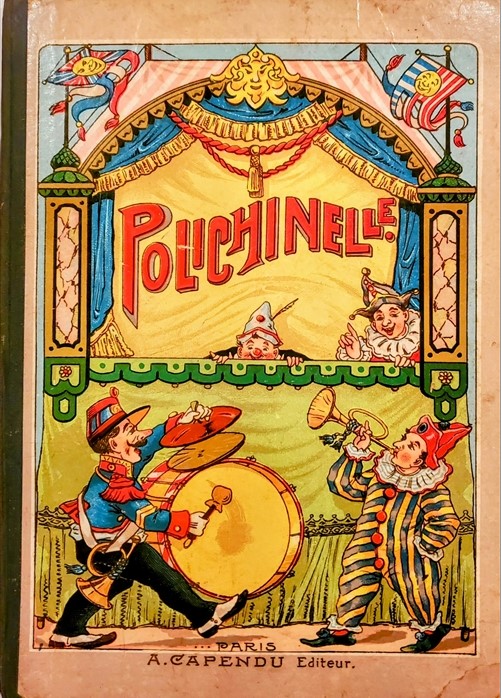 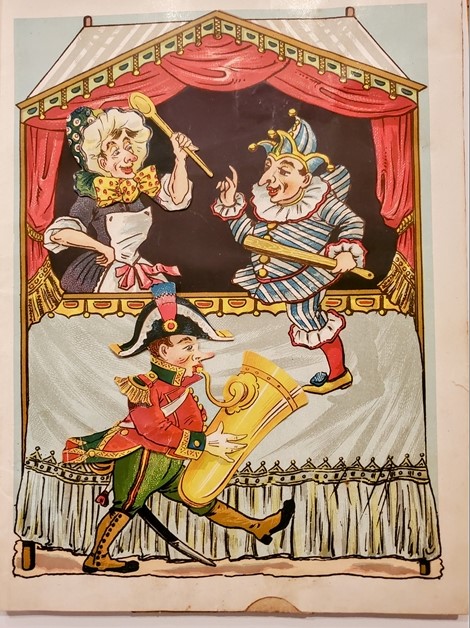
Another example of a likely International Dean book that is very different from Dean's English version is the Dutch edition of a Dean & Son* Movable Dress Book - Rudolf en Susanna of Beloonde Ouderliefde - 1865. It shares notable similarities with Dean & Son's "dress books," particularly in its use of real fabrics to create a three-dimensional effect in illustrations. Another clue is indicated by the cover stating it was translated from English. However, without identifying the exact English title, it’s challenging to confirm whether it was a direct adaptation of a specific Dean & Son book or simply influenced by their style and format. See this book here: Dutch Version of a Dan Dress Book
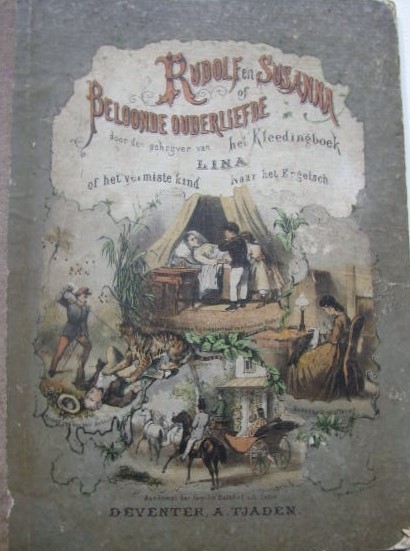 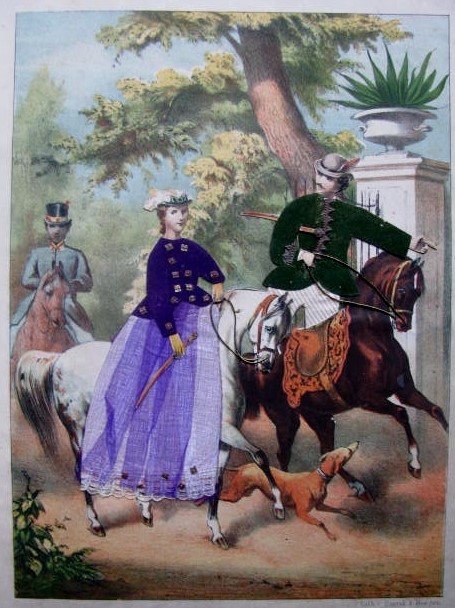
Whereas a Dutch edition of Dean's New Scenic Books Robinson Crusoe, Belinfante's NIEUWE PRENTENBOEKEN ,used the exact same images as the English version - only the text was changed to read in Dutch.
See this book at vintagepopupbooks.com Dean's new Scenic Book in Dutch
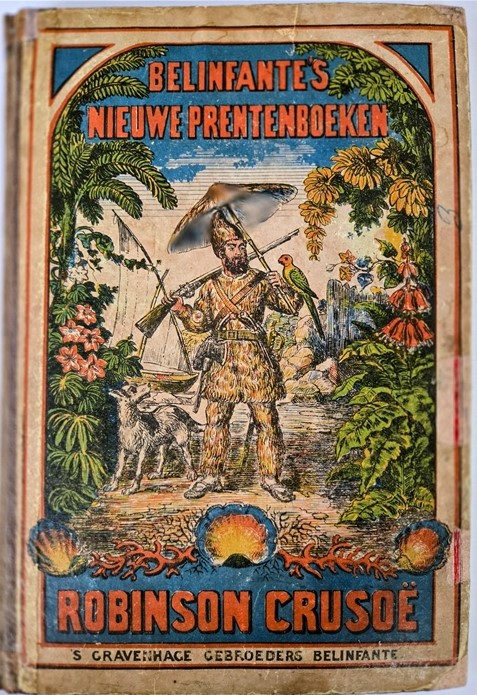 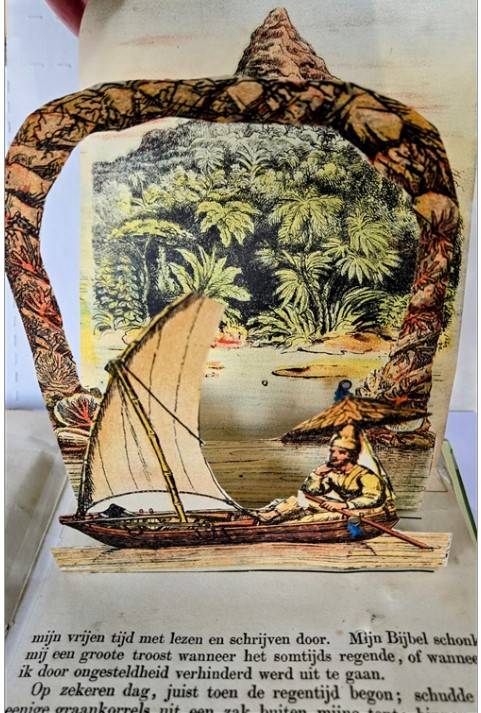
Below is an example of A Dean & Son 1890's pop-up book that was published in an identical version - except for the language - in German
See this book at: Dean's Visit to the Farm pop-up book German edition
 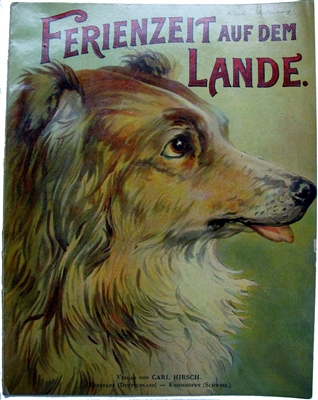 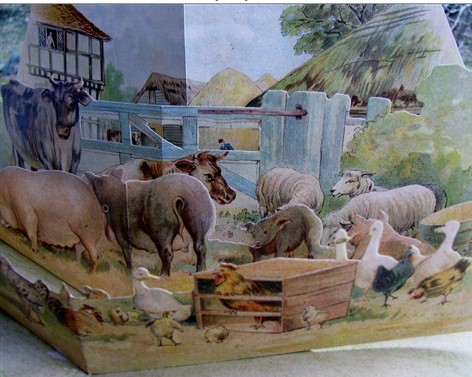
According to
Literary News in 1880, “Dean & Son, the famous London publishers of toy books for children, have made an arrangement with E. P. Dutton & Co., of New York, giving them the exclusive agency for America for their publications.” However, it remains unclear how long this relationship lasted, as advertisements for Dean & Son’s books under Dutton’s name appear primarily in 1882 and 1883.
 D D
We know that the primary American Publisher for the later 1880s and 90’s (1884 – 1910?) was International Art Publishing Co., Ltd. in New York, Philadelphia, and Chicago. By 1913 they were using Chicago publisher W. B. Conkey as evidenced by a long court transcript online from April of 1913 between Henry Dean and Chicago publisher W. B. Conkey. Dean claimed that Conkey had not paid all of the agreed royalties for Dean’s Toy Books. There are other examples of when exporting wasn’t always a smooth business for the Deans. In 1901, there was a court case between Molling & Co (a German printer) and Dean & Son Ltd. It seems that Molling was contracted to supply Dean with printed books intended for England and America. The books sent to America were rejected as not being of the quality agreed upon and were sent back to England. Dean & Son also published illustrations printed by other printers. Some of Dean & Son’s series of toy books from the 1870s and 1880s were printed by the Dutch printing house Emrik & Binger at Haarlem in the 1870s and 1880s. For more extensive information on International Dean & Son titles and exporting, see Pictures for Children’s Books on the 19th-century international market: an introductory study by © Göte Klingberg and The Swedish Institute for Children’s Books.
High Society...
Dean & Son Toy books were so popular in the nineteenth century that this lady even won 1st prize for donning a costume, at the fancy dress ball at Covent Garden, made of Dean’s Toy Books printed on satin!
References:
Author's Note: This composition serves as an informational piece rather than a scholarly research document. Despite this, considerable effort has been dedicated to ensuring the content's accuracy and engagement. The material draws upon a wide spectrum of resources, with explicit citations included for direct quotations only. Should you require specific source details for any content, please reach out to us at [email protected]
British Museum. Dept. of Printed Books by W. Clowes & Sons, 1882
Chats with several antiquarian booksellers in and around Covent Garden, London
The Publishers Circle - May 23, 1891
Garvey, Nathan. A Dynasty on the Margins of the Trade: The Bailey Family of Printers, Ca. 1740-1840, Part 1 Script & Print, Vol. 32, No. 3, 2009
Garvey, Nathan. The Celebrated George Barrington: A Spurious Author, the Book Trade, and Botany Bay (Potts Point, NSW: Hordern House, 2008)
The Bookseller: A Newspaper of British and Foreign Literature 1885
The University of Virginia. Pop goes the page - History of Movable books
Pop-Up and Movable Books, A bibliography. Anne R. Montanaro
Movable Books: An Illustrated History by Peter Haining New English Library Limited, 1979
English Children’s Books 1600-1900, Percy Muir (London: B.T. Batsford, 1954), pp. 234-236
The Academy and Literature, Volume 39 1891 (George Alfred Henry Dean death notice)
Familysearch.org – (family information)
The Northwest Kent Historical Society – London England
The Bookseller, 1890 – “Trade and literary gossip” page 800
The Champion and Weekly Herald, Volume 1, Issue 7 - Volume 2, Issue 7 – 1838
House of Commons Papers, Volume 4 1825.
The Bookworm, Volume 1 – 1888
The Publications of the Harleian Society: Registers, Volume 32 – 1905 page 30
The Publishers' circular and booksellers' record. ... vol.116 1922 page 479, The Hathi Trust Digital Library
Children's Books in England: Five Centuries of Social Life - 2011 page 212
Genealogy.com – Bailey Family
Will of Susan Bailey otherwise Bailey, Widow of Saint Martin Outwich, City of London –The United Kingdom National Archives
Will of Thomas Bailey, Printer and Stationer of Leadenhall Street London, City of London, The United Kingdom National Archives
Openlibrary.org
A Dictionary of Printers and Printing: With the Progress of Literature, Ancient and Modern; 1839
The Publisher's Circular Limited, 1910 - page 11
The Publisher, Volume 138, 1933
Aberdeen Journal - Monday 05 September 1921
Oxford Encyclopedia of Children's Literature: Movable Books and Pop-Up Books
Movable Books: An Illustrated History By Peter Haining New English Library Limited, 1979.
A Dictionary of the Booksellers and Printers Who Were at Work in England, Scotland and Ireland from 1641 to 1667. London: Bibliographical Society. Plomer, Henry R., et al. 1922. page 11
The celebrated George Barrington: a spurious author, the book trade, and Botany Bay, Nathan Garvey Hordern House, Dec 1, 2008 page 209
The gaping wide-mouthed, waddling frog; a new and entertaining game book – 1887
UKdata.com – Dean & Son Limited current registered address
Illinois Appellate Reports: Official Reports of the Illinois ..., Volume 180 By Illinois.Appellate Court - Dean & Son v. W. B. Conkey Co.
Newspaper articles:
London Morning Post - Thursday 01 December 1892
Western Daily Press - Wednesday 04 July 1923
Lloyd’s weekly London Newspaper Sept. 9, 1866
Official Gazette of the United States Patent Office, Volume 109, Part 1
Bryn Mawr College Special Collections. (2020, March 31). Transformations of Images and Texts: The Orphan Girl. Retrieved February 22, 2024, from https://specialcollections.blogs.brynmawr.edu/202...
Vanbersel, A. (2019). Dean & Son’s Transformations: International Collaborations and Editorial Strategies in the 19th Century. Master’s thesis, National School of Information and Library Sciences.
Feather, John. A History of British Publishing. London: Routledge, 2006.This comprehensive study examines the development of the British publishing industry, highlighting strategies such as the use of commission agents for international distribution. It explores how publishers like Dean & Son leveraged intermediaries to reach global markets, optimize logistics, and adapt to local preferences.
McCleery, Alistair. "The Distribution and Trade of Books in the Nineteenth Century." In The Cambridge History of the Book in Britain, Volume 6: 1830-1914, edited by David McKitterick, 291-308. Cambridge: Cambridge University Press, 2015.
British Map Engravers. "Anna Maria Munday." Last modified November 11, 2024. Accessed November 11, 2024. https://britishmapengravers.net/entries/m-entries/anna-maria-munday/.
Vanbersel, Anouk. Dean & Son's Transformations: Productions, Inventions, and Editorial Renewals in a Competitive Environment. Study of a Corpus Published by Dean & Son, Preserved at the Happy Hour. National Master's Diploma, Université de Lyon, 2019.
Dates at locations: Boase, Frederic. Modern English Biography: Containing Many Thousand Concise Memoirs of Persons Who Have Died Between the Years 1851-1900, With an Index of the Most Interesting Matter. Volume 1. London: Netherton and Worth, 1912.
The Publishers' Circular and Booksellers' Record, vol. 117 (London: Sampson Low, Marston & Co., May 13, 1922), 479.
|